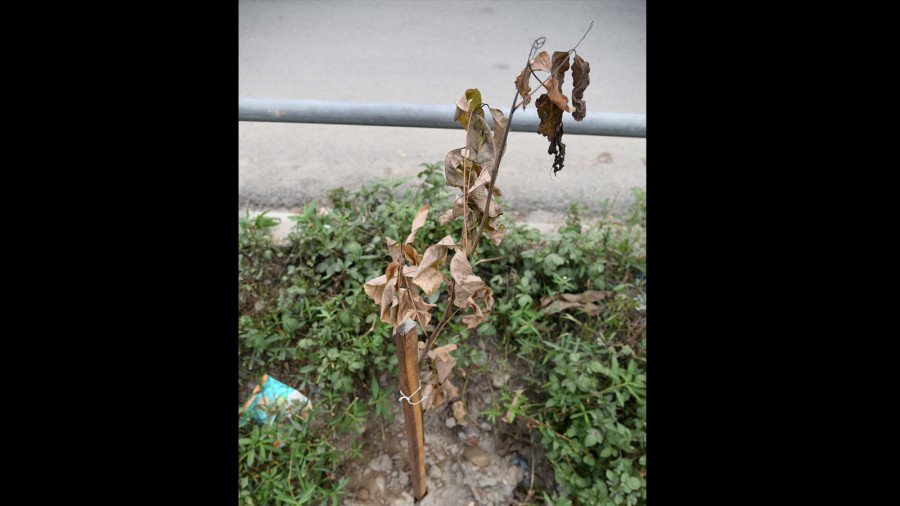Valley
Saplings planted along Kalanki-Koteshwor road are dying for the lack of care
Due to the lack of watering and regular supervision by the authorities, the plants have started dying and many are missing from where they were planted.
Anup Ojha
If one were to observe the huge crowd that included ministers, government officials and representatives from non-government organisations and the private sector at the inauguration of the nationwide tree plantation programme by Prime Minister KP Sharma Oli on June 29, one would easily surmise that the bizarre looking Kalanki-Koteshwor stretch would soon be lined with greenery.
However, due to the lack of watering and regular supervision by the authorities, the plants have started dying and many are missing from where they were planted.
On the inaugural day, at the initiative of the Ministry of Forest and Environment, 2,681 saplings of nine different species including Giento flower, Pear, Tej Patta (Cinnamomum tamala), Bottlebrushes and Jacaranda were planted along the 10.5 km section of the newly built Kalanki-Koteshwor road.
Ministry officials said it cost Rs 5,000 to Rs 7,000 to plant one sapling, which means around Rs 13.4 million was spent on plantation along the stretch.
Rajendra KC, deputy director at the Department of Forest and Soil Conservation, said the government’s investment was negligible, with all financial contributions made by private companies, including organisations and clubs. “We are doing our best. Many plants are dying because they could not adapt to the environment, so we will replace the dying ones with the new ones,” said KC.
Saplings planted along the Balkhu-Satdobato section were found not in good shape on Thursday. Most of the saplings were missing, while those still intact had dried and were unprotected.
“It’s been a week since the plantation but no government authority has returned to take stock of these plants,” said Saroj Maharjan, owner of NS Forniture at Dhobighat. “The government just makes plans, gathers big crowds and then does nothing,” added Maharjan.
Like Maharjan, many other locals who had seen the fanfare last week said they were not happy with the way the authorities were doing things on a whim.
“Last week’s plantation reminded me of the tree plantation campaigns or any other programmes during the Panchayat era (1960-1990), when the regime would suddenly ask people to contribute to nation building,” said Kanchha Maharjan, another local from Ekantakuna.
When the Post approached Sindhu Prasad Dhungana, a joint-secretary at the Ministry of Forest and Environment, he said the ministry was not getting support from local governments, local residents and NGOs that had a significant presence on the plantation day.
“We took the initiative. The Kathmandu Metropolitan City, the Lalitpur Metropolitan City and the Department of Roads had vowed to work in tandem. Now they show no interest in protecting the saplings,” said Dhungana.
“But we won’t let these plants die. We are committed to making our plan a success.”




 12.12°C Kathmandu
12.12°C Kathmandu.jpg)










